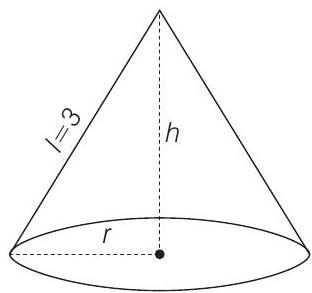Application of Derivatives 4 Question 10
11. The maximum volume (in cu.m) of the right circular cone having slant height
(2019 Main, 9 Jan I)
(a)
(b)
(c)
(d)
Show Answer
Answer:
Correct Answer: 11. (b)
Solution:
- Let

Now, volume
For maximum volume
Here,
and
Thus, volume is maximum when
Now, maximum volume






